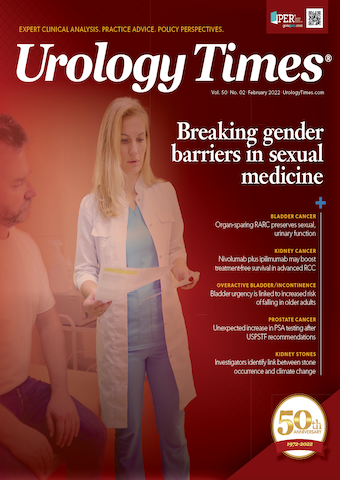Publication
Article
Urology Times Journal
Urinary incontinence linked to increased risk of falling in older adults
Author(s):
Urinary urgency was associated with an increased risk of falling in older adults with overactive bladder (OAB), according to a study by Canadian researchers.1,2
“Falls are the leading cause of accidental death in seniors, and many people don’t know that having bladder control problems makes you about twice as likely to fall over,” William Gibson, MBChB, MRCP, PhD, lead author of the study and assistant professor of geriatric medicine at the University of Alberta, stated in a news release. “There’s not previously been a lot of evidence that treating people’s incontinence reduces their risk of falling. So this is a jumping-off point, because now we’ve demonstrated that the sensation of urgency is a source of distraction.”
Overall, the study included 27 patients from Alberta with a clinical diagnosis of OAB. There were 22 females and 5 males, and the mean age at baseline was 75 years (range, 65-87). For the study, the investigators assessed the patients using 3-Dimensional Instrumented Gait Analysis under 3 conditions: empty bladder (normal conditions); while the patient was simultaneously doing a basic cognitive test (n-back test); when the patient experienced urgency. The investigators then compared temporal-spatial gait and kinematic gait data between each condition.
The results showed that there was a decrease in gait velocity from 1.1ms-1 with an empty bladder to 1.0ms-1 when experiencing urgency and 0.9ms-1 when being distracted (P = .008 and P <.001, respectively). There was also a decrease in stride length in the 3 conditions from 1.2m to 1.1m and 1.0m, respectively (P <.001 for both decreases). The investigators also noted that detrusor overactivity had no impact on the results (P = 0.77).
“This is pretty good evidence that people with incontinence are being distracted by their bladders, which means that they're less able to concentrate on walking,” Gibson stated. “Being balanced and walking require some cognitive inputs, and for young, healthy people, they don’t have to think about walking,” he continued. “But when you’re older, with changes to the brain, it requires more cognitive input to maintain balance. If you’ve then got a distracting factor of your bladder, it makes you more likely to fall.”
Going forward, Gibson hopes his research leads to a greater awareness among healthcare professionals and patients about the association between incontinence and balance.
“This is the first time the link between bladder urgency and falling risk has been demonstrated, and it's nice to be challenging the preconceived notion that the reason people are falling is because they’re running for the toilet,” Gibson stated. “I think we've really put that one to bed and shown that it's much more complicated than that. It opens up a big field of potential research, which we'll be doing more of moving forward.”
References
1. Study links overactive bladder to increased falling risk in older adults. Published online December 7, 2021. Accessed December 17, 2021. https://www.eurekalert.org/news-releases/937156.
2. Gibson W, Jones A, Hunter K, et al. Urinary urgency acts as a source of divided attention leading to changes in gait in older adults with overactive bladder. PLoS One. 2021;16(10):e0257506. doi: 10.1371/journal.pone.0257506

Newsletter
Stay current with the latest urology news and practice-changing insights — sign up now for the essential updates every urologist needs.




























